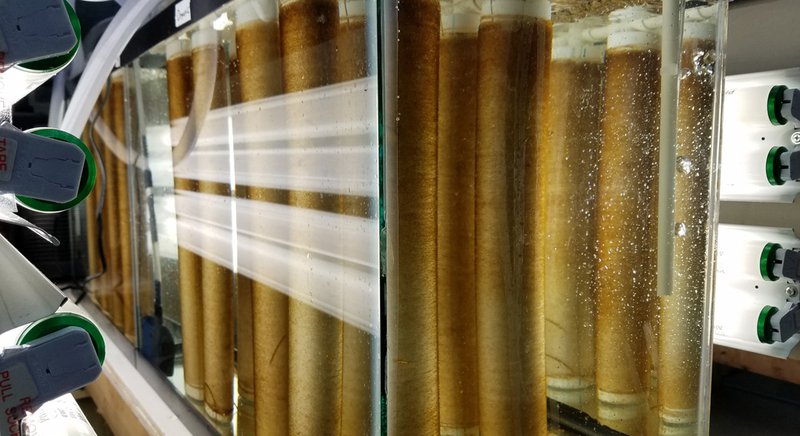Seed
You need to plan ahead to make sure seed stock is available for the growing season. Without a lead on seed, you could end up missing the entire growing season of your first year.

Questions
General Information
-
- Approved Hatchery Seed
- “Wild” Seed, Same LPA Health Area
- “Wild” Seed, Different LPA Health Area (Transfer Permit Required)
-
Any seed that does not come directly from an approved hatchery is considered “wild” seed and must come from within the LPA License Health Zone in which your license is located.
-
All wild shellfish stock or seed used for cultivation or grow-out must originate from within the same Limited Purpose Aquaculture (LPA) license Health Zone as the LPA license site. A transfer permit is required from DMR if the stock or seed originates from outside the Health Zone prior to placing anything on your LPA site. The approved (LPA) license Health Zone map can be found here.
-
No, unless you get a special import permit from DMR. Contact the DMR Division of Aquaculture for more information at [email protected].
Oyster Seed
-
Oyster seed is usually ordered from an approved hatchery. Orders are typically placed in the winter for spring/summer grow-out once the waters have warmed. Hatcheries fill orders on a first-come, first-served basis, so the sooner you place an order, the earlier in the growing season you will receive it. The oyster growing season in Maine is relatively short and a week or two can make a big difference in your growth.
-
It all depends on your budget, need for revenue, appetite for risk, and the growout technique. Smaller seed is less expensive to initially purchase, but more labor/time intensive and harder to keep alive and will take longer to reach market size than larger seed. Large seed is more expensive to buy but reduces labor/time, and juvenile mortality risk, and will grow to market size sooner.
-
Care technique depends on the size of the seed you ordered and your farming operation, but smaller seed is initially placed in small-mesh nursery bags or an upweller. One common mistake to avoid is using a mesh that is too large and having half (or all of) your seed fall out. Your mesh needs to be smaller than the seed size classification (e.g., a 2mm seed will fall through a 2mm mesh). Contact the hatchery to find out the best mesh size to use and talk to other growers about tried and true seed growout methods that have worked for them.
Mussel Seed
-
Mussel seed for rafts is collected from the wild by spat collector ropes set out in spring. The seed is allowed to grow for about six months then sorted and graded by size and attached to grow out lines (socked) on a lease in the fall.
-
If you collect spat outside of your lease site, you’ll need a spat collection license from DMR. If you’re unsure, contact DMR Division of Aquaculture Staff.
-
Yes, growers with extra seed will often sell to other farms. The Downeast Institute has been developing commercial hatchery production techniques and may have spat for sale as well.
Scallop Seed
-
Sea scallop seed is collected from the wild using spat collection bags. These spat bags are deployed in the fall and collected in early spring. The collected scallop seed is moved to grow-out sites in early spring/summer.
-
If you collect spat outside of your lease site, you’ll need a spat collection license from DMR. If you’re unsure, contact the DMR Division of Aquaculture Staff.
-
Yes, growers who have collected extra spat/seed will often sell to other farms. Additionally, the Downeast Institute, Mook Sea Farm, and the Darling Marine Center have been developing commercial hatchery production techniques and may have spat for sale as well.
-
Yes there is one approved hatchery for bay scallops in Maine.
Clam Seed
-
Clams may only be sourced from an approved hatchery.
-
Currently, in the state of Maine you can purchase seed for hard clams/quahogs (M. Mercenaria), Soft-shelled clams (M. Arenaria), Atlantic surf clams/hen clams (S. Solidissima), and Arctic surf clams (M. Polynyma).
Kelp Seed
-
Kelp seed is usually ordered from a DMR-approved nursery. Kelp spores are collected from wild kelp and grown in a land-based nursery during late summer and fall. The kelp spores settle onto spools of twine and grow to seedlings. Spools are purchased and picked up from the nurseries in late fall (Oct-Dec) and deployed on state-approved grow-out sites.
-
The National Seaweed Nursery Directory is a good resource to start with.
It is best to contact nurseries directly to order kelp spools for the season, typically before September. Most nurseries require 4-8 weeks lead time to provide spools.
Seed Resources
-
Visit Approved Hatcheries For Shellfish Species
-
Visit National Seaweed Nursery Directory
-
Visit Building a Floating Longline System for Nursery Culture of Eastern Oysters
-
Visit Mussel Aquaculture in the Northeast
-
Visit Methods and Materials for Aquaculture Production of Sea Scallops (Placopecten magellanicus)
-
Visit Clam Kit: Simple Shellfish Management Tools - Part 1: Introduction & Overview
